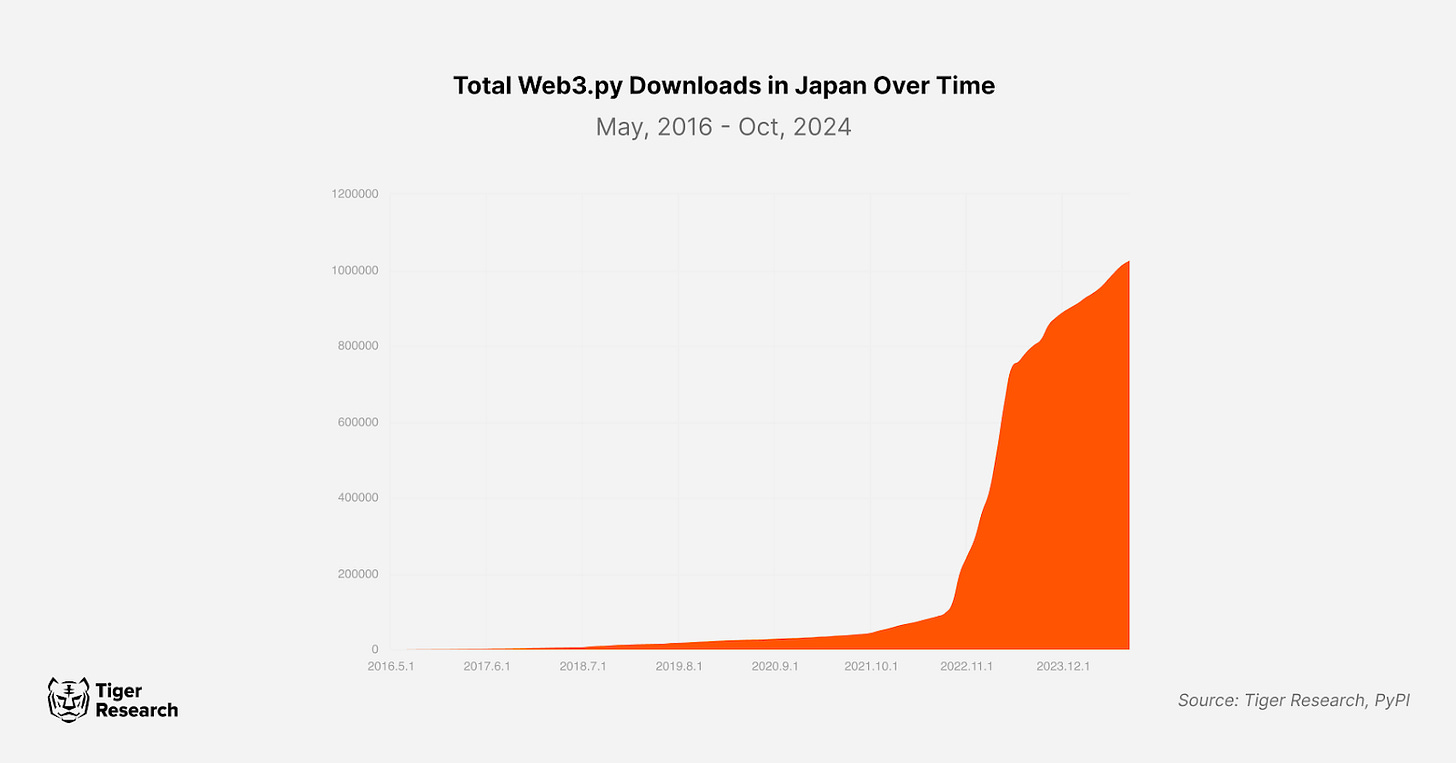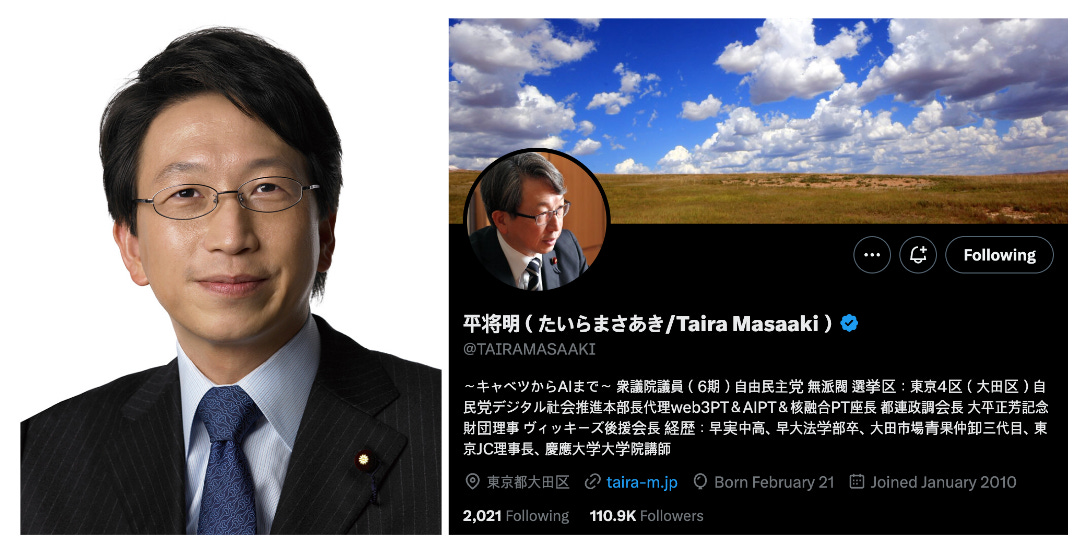How Will Japan’s New Prime Minister Impact the Web3 Industry?
Ishiba’s Cabinet and Japan’s Web3 Future
TL;DR
While Japan's efforts to activate the Web3 industry are showing results, the appointment of the Ishiba cabinet signals potential shifts in policy.
Prime Minister Ishiba’s intention to continue his predecessor's policies, his plans for rural blockchain initiatives, and the appointment of Web3 expert Masaaki Taira as digital minister suggest continuity in Japan’s Web3 policies.
However, the Ishiba cabinet’s low approval ratings and the turmoil from the early dissolution of the House of Representatives require close monitoring of these policies’ feasibility and direction.
Thank you to Wakyodo
for their detailed review of the Japanese market for this report.
1. Introduction
Japan's Web3 market is defined by government-led efforts to revitalize the industry. Introduced by the Kishida Cabinet in 2022, this policy highlights the government's strong commitment to positioning Web3 technology as a key growth driver. Key actions include establishing a Web3.0 office within the METI(Ministry of Economy, Trade, and Industry), revising stablecoin-related regulations, and promoting various support initiatives.
The Japanese government's proactive Web3 policy is producing tangible results. Notably, the number of Web3 technology development library downloads surged in the second half of 2022, revitalizing the broader industry. This demonstrates that government-led initiatives are driving tangible growth in the sector.
However, after Prime Minister Kishida announced he would not seek re-election, Japan’s Web3 industry faces a significant turning point. This report examines the effects of these political changes on Japan’s Web3 landscape and outlines future expectations.
2. Changes in the Japanese Political Landscape: Election of a New Prime Minister
The most significant shift in Japan’s political landscape is the election of a new prime minister. On October 1, Shigeru Ishiba was elected as the new prime minister and announced his cabinet. Often referred to as the "opposition within the ruling party," Ishiba is known for his independent stance within the LDP. Ishiba has stated he will maintain Kishida's policy framework, so major changes are not expected.
Ishiba’s policy continuity is rooted in Japan’s unique political structure. Unlike South Korea, where a change in government between ruling and opposition parties often brings major policy shifts, Japan's Liberal Democratic Party(LDP) has held power for 12 years with a majority in the Diet. This system ensures that the LDP leader is typically elected as prime minister unless unusual circumstances arise. As a result, prime ministers from the same party are consistently elected. This allows for a natural continuation of policies. Ishiba follows this path and upholds the policies of his predecessors, Suga and Kishida.
3. Shigeru Ishiba, who is he?
Shigeru Ishiba has confirmed he will continue the policies of his predecessor Kishida, so the overall framework for Web3 industry policies is expected to stay the same. However, there may be differences in how specific policies are executed and prioritized.
Prime Minister Ishiba is widely recognized in Japanese politics for his expertise in rural development and regional balance. His previous roles as MAFF(Minister of Agriculture, Forestry and Fisheries) and Minister for Regional Revitalization highlight this. His experience as Minister for Regional Revitalization, where he led efforts to revitalize Japan’s regions and address the country’s declining population, has significantly shaped his policy direction.
Prime Minister Ishiba’s experience in regional development combined with Web3 technology will likely influence new regional growth policies. During his LDP election campaign, he introduced the “Regional Development 2.0” policy, which includes plans to use NFTs and blockchain to revitalize local areas. The goal is to enhance the value of a region's unique assets, such as specialty foods and unique tourism experiences, through Web3 technology.

Japan is already a leader in using blockchain technology for local development. As of September 2024, 263 NFT, DAO, and other Web3 projects were active across all 46 regions of Japan. The Ishiba cabinet is expected to further boost this trend.
4. Masaaki Taira: A Key Member of Prime Minister Ishiba’s Cabinet
In addition to Prime Minister Ishiba, Digital Minister Masaaki Taira plays a key role in the cabinet. Taira, who has led the LDP’s Web3 Project Team (Web3PT), is a pivotal figure in Japan's Web3 strategy. He developed the blueprint for the industry through his Web3.0 white paper, NFT white paper, and guidelines for auditing Web3 companies. Taira sees Web3 technology as a vital growth engine and believes the future of Japan's economy depends on blockchain innovation.
At his inaugural press conference as Digital Minister, Taira announced plans to use NFTs and blockchain to revitalize rural areas as part of Prime Minister Ishiba's “Regional Revitalization 2.0” policy. He also highlighted the potential of Web3 games and stablecoins. His plans provides insight into the future of Japan’s Web3 industry policy and warrants close attention.
5. Ishiba Cabinet: Three Key Points to Note
The most notable point of the Ishiba Cabinet is the focus on revitalizing rural areas through Web3 technology. Examining how NFT technology can boost local economies and align with broader policy initiatives is crucial. This underscores the potential for NFTs to extend beyond digital assets, with expectations of wider adoption and integration across various sectors.
The regulation of stablecoins also deserves attention. While Japan has one of the most advanced regulatory frameworks for stablecoins among major economies, there are few practical examples. Listing stablecoins on exchanges and the issuance of trust-type stablecoins has been slow. Fortunately, Prime Minister Ishiba’s banking background gives him a strong understanding of the sector, and Minister Taira has expressed enthusiasm about the potential for future developments.
Finally, taxation remains one of the biggest challenges to the growth of Japan's Web3 industry. Currently, profits from virtual assets are taxed at a rate of up to 55%. Minister Taira has acknowledged that crypto taxation is a critical issue and intends to engage in active discussions regarding the issue. The Financial Services Agency (FSA) also recently announced plans to review the matter, so future changes worth monitoring closely.
6. Conclusion
As Prime Minister Ishiba has committed to continuing the policies of the Kishida cabinet, the Web3 industry’s policy framework is expected to remain stable. However, the Ishiba cabinet faces turmoil with record-low approval ratings and early elections due to House dissolution. Consequently, the feasibility and specific direction of their Web3 policies remain uncertain.
Despite these uncertainties, there are some encouraging signs for the Web3 industry. Masaaki Taira's appointment as Digital Minister is a positive sign, given his strong understanding of the Web3 industry. Ishiba’s mention of technologies like NFTs reinforces this outlook. It will be important to monitor how the Ishiba cabinet's Web3 policies take shape and come to fruition.
🐯 More from Tiger Research
Read more reports related to this research.Disclaimer
This report has been prepared based on materials believed to be reliable. However, we do not expressly or impliedly warrant the accuracy, completeness, and suitability of the information. We disclaim any liability for any losses arising from the use of this report or its contents. The conclusions and recommendations in this report are based on information available at the time of preparation and are subject to change without notice. All projects, estimates, forecasts, objectives, opinions, and views expressed in this report are subject to change without notice and may differ from or be contrary to the opinions of others or other organizations.
This document is for informational purposes only and should not be considered legal, business, investment, or tax advice. Any references to securities or digital assets are for illustrative purposes only and do not constitute an investment recommendation or an offer to provide investment advisory services. This material is not directed at investors or potential investors.
Terms of Usage
Tiger Research allows the fair use of its reports. ‘Fair use’ is a principle that broadly permits the use of specific content for public interest purposes, as long as it doesn't harm the commercial value of the material. If the use aligns with the purpose of fair use, the reports can be utilized without prior permission. However, when citing Tiger Research's reports, it is mandatory to 1) clearly state 'Tiger Research' as the source, 2) include the Tiger Research logo(Black/White). If the material is to be restructured and published, separate negotiations are required. Unauthorized use of the reports may result in legal action.








